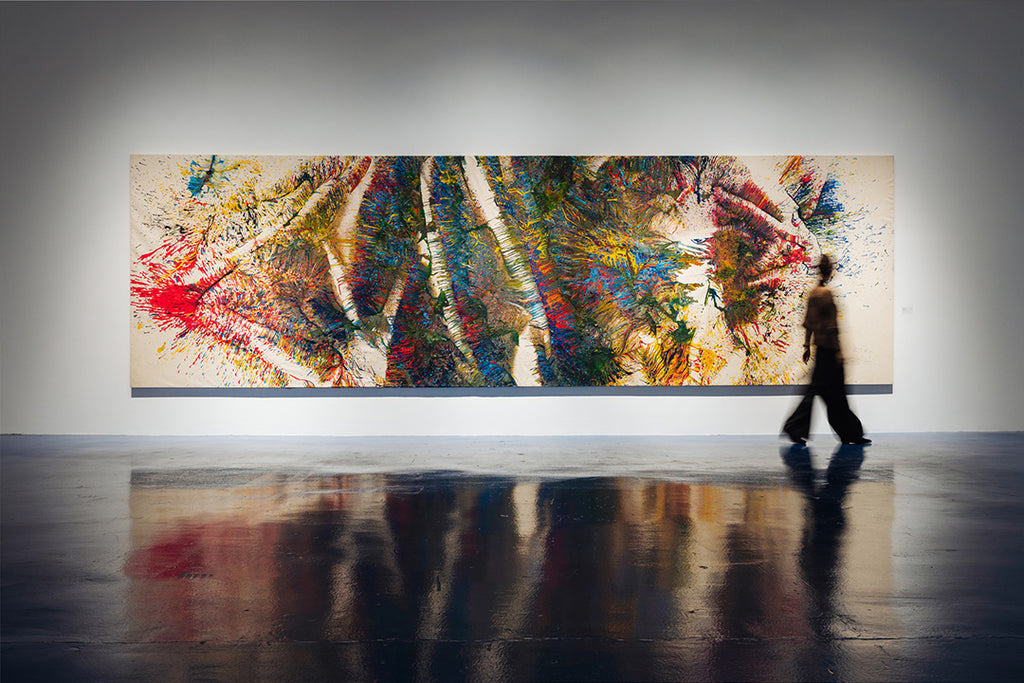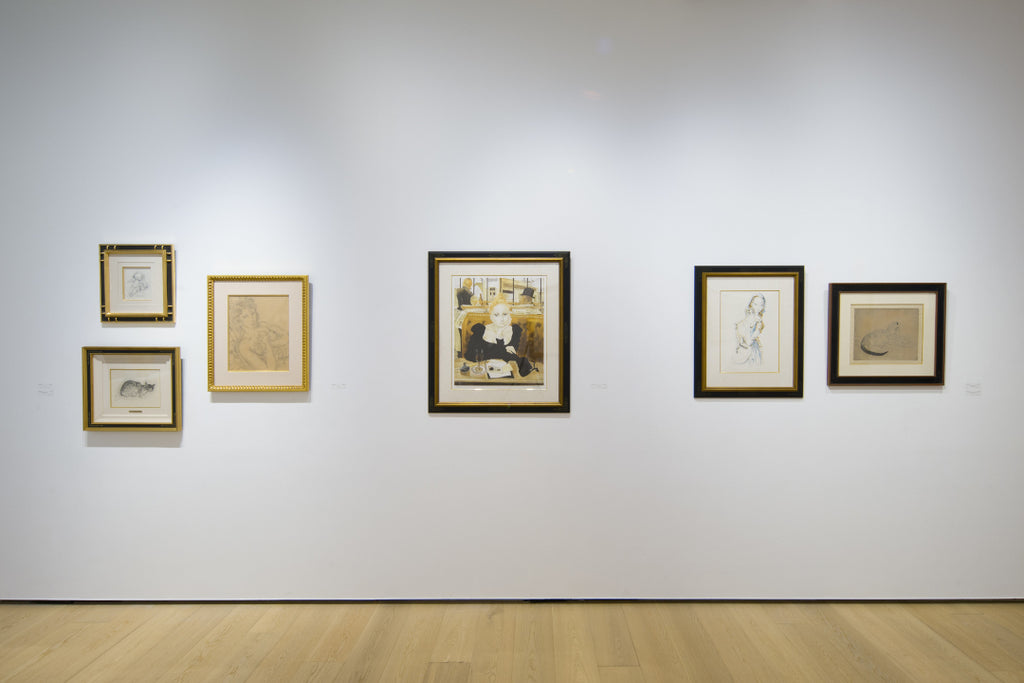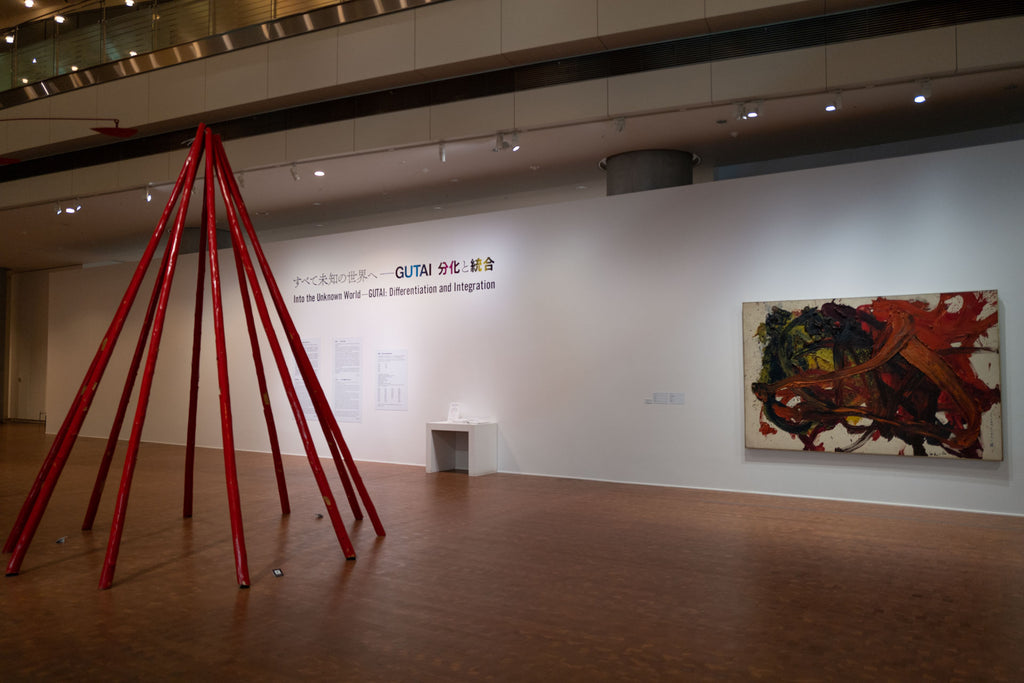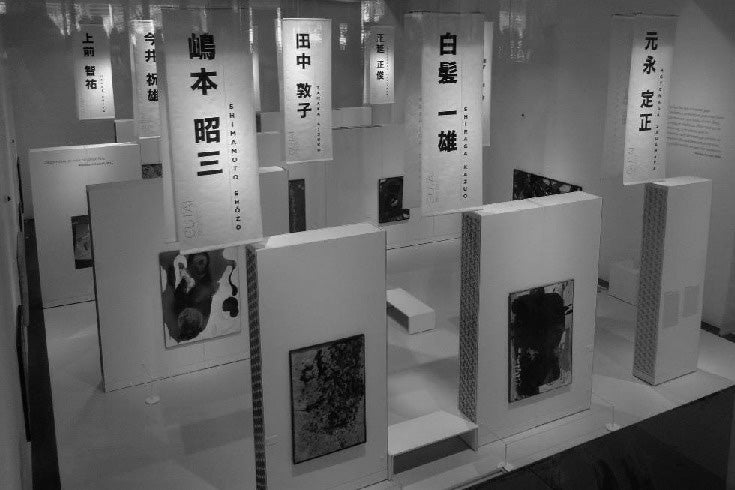ARTICLES
Shozo Shimamoto, the Only Gutai Artist who did Performances
GUTAI STILL ALIVE 2015 vol.1
17/35

Vento d'Oriente, Certosa di San Giacomo, Italy, 2008
A project evolving the digitized archive of the book, “GUTAI STILL ALIVE 2015 vol.1”. The 17th edition features Shozo Shimamoto, a founding member of the Gutai Art Association known for his painting performances and grand-scale creations that were ahead of his time. Art critic Shigenobu Kimura talks about Shimamoto's famous performances and their unique characteristics.
Eccentric Ideas and Fiery Performances
Shigenobu Kimura
Professor emeritus at Osaka University, art critic
Formed in 1954, the Gutai group was initially known for its sensational performances. In 1956 “Life” magazine reported it from Japan. Allan Kaprow, known as a pioneer in performance (happening) art, affirmed that the Gutai artists did happening art earliest in the world. Among the avant-garde performers of Gutai, including Kazuo Shiraga, who painted with his feet and Sadamasa Motonaga, who poured paint on the canvas, Shozo Shimamoto was the fieriest in his performances.
In the second Gutai Open-Air Exhibition in 1956, Shimamoto discharged bags of paint from a 4-meter long, 30-centimeter caliber iron pipe by acetylene gas explosion, to splash the paint on a red vinyl sheet measuring 10 x 10 meters – what’s known as “cannon painting.” This later developed into the method of throwing bottles of paint onto a stone put on the center of the canvas. Its biggest performance took place in March 2000 in France. In the courtyard of a castle in Dijon, Shimamoto spread newspapers dated Jan. 1 of that year, on which hundreds of artists from France and abroad had painted, and dropped plastic cups containing paint on the newspapers from a balloon floating 20 meters above.
Besides, Shimamoto made tableaux by merely tearing the canvas (preceding Lucio Fontana), mimeographed identical signs in pictures (earlier than Giuseppe Capogrossi). French art critic Michel Tapié, who advocated Informalist painting, said, “No other artists than Shimamoto make me feel ‘Gutai’ more.”
Shimamoto wrote an essay titled “Efude Shokei Ron (on the punishment of the paintbrush)” in 1957. It reads, “The past of the paint is nothing less than a long history of challenging the paintbrush, similar to the stories of miserable female workers. I think we should first emancipate the paint from the brush. Only by discarding the brush, the paint would revive.” The word “punishment” in the title has a stronger sense of denial than “needlessness.” And it was completely in line with Jiro Yoshihara’s “Gutai Bijutsu Sengen (Gutai manifesto)” of 1956. Yoshihara said, “Matter doesn’t assimilate to spirit. Spirit doesn’t subordinate matter. Matter, when it reveals its essence as it is, starts to narrate and even cries out.”
Shimamoto said there are three types of formative art. What we feel beautiful, what’s trifling and what attracts our attention. What attracts our attention is, according to him, what actually contains “unknown beauty.” Thus he repeated formative experiments in search of new art within the realm of non-art. Besides formative art, Shimamoto attempted creating music. For example, he extremely speeded up the tape recorder to record various sounds stretching or shrinking them, chopped the tape and then sewed the pieces together, and played it back. It was a search for a new musique concrète.
In formative art until then, even though there was a distinction between external objects and internal ideas, matière was used as a means to express them. But, in the case of Shimamoto, not only natural objects but also such internal elements as ideas and concepts were discarded, and matière itself was expressed. That is, matière was complete in itself, and there were no objects or ideas to support it. That’s why his works became even more materialistic and he inclined to forming “objects” rather than depicting “affairs.” Depiction of “affairs” is visual, while formation of “objects” is haptic. The haptic sense senses an “object” itself, while vision senses the surface of the “object.” Thus the haptic sense always links to matière as an actual sense, but vision links to form through imagery. It was quite natural for Shimamoto, who thought painting to be a form of expression of life rather than a mere object of observation, to aim at the haptic sense rather than vision, and at “objects” rather than “affairs.”
In 1972, as its leader Yoshihara died, the Gutai group disbanded. Thereupon Shimamoto formed an “Artist Union” to continue artistic activities, and set to mail art around 1976. In mail art, works are done as they are sent by mail to the recipients. It’s a kind of conceptual art. Some even put postage stamps on dried squid and other uncommon stuff.
Shimamoto mailed photographs of his shaved head to kings and presidents around the world, asking them to write a message of peace on the photograph and send it back. The Spanish king and the then president Aquino of the Philippines granted the artist’s request, which happenings were reported by weekly magazines.
Some criticized Shimamoto’s eccentric ideas, hyperbolic performances and showy self-display. But these were necessary in order for him to struggle at the forefront of the international art scene. By his non-Japanese manner, Shimamoto opened a wind hole in Japan’s insular art world and paved the way for its internationalization.
(Mothly Gallery, December 2013)
Read more about the “Gutai Art Association »
*Information in this article is at the time of publication.
ARTIST

SHOZO SHIMAMOTO는 일본의 GUTAI 미술 협회의 창립 멤버 중 한 명으로, 무엇보다 퍼포먼스 주도의 큰 스케일과 역동성을 띠는 것이 특징이다. SHIMAMOTO의 '대포 그림'과 '병 던지기 수법'은 국제적으로 인정받고 있는데, 전자는 자체 제작한 포관을 이용해 컬러볼을 쏘고 후자는 병에 물감을 채워 캔버스에 던진다. SHIMAMOTO의 예술적 본질은 "행동의 흔적" 그 자체이며, GUTAI 정신을 뚜렷하게 나타낸다. 일본 현대 미술에 대한 국제적인 관심을 촉진시킨 SHIMAMOTO는 선구자의 끝없는 사고방식을 보여주고 있다.



